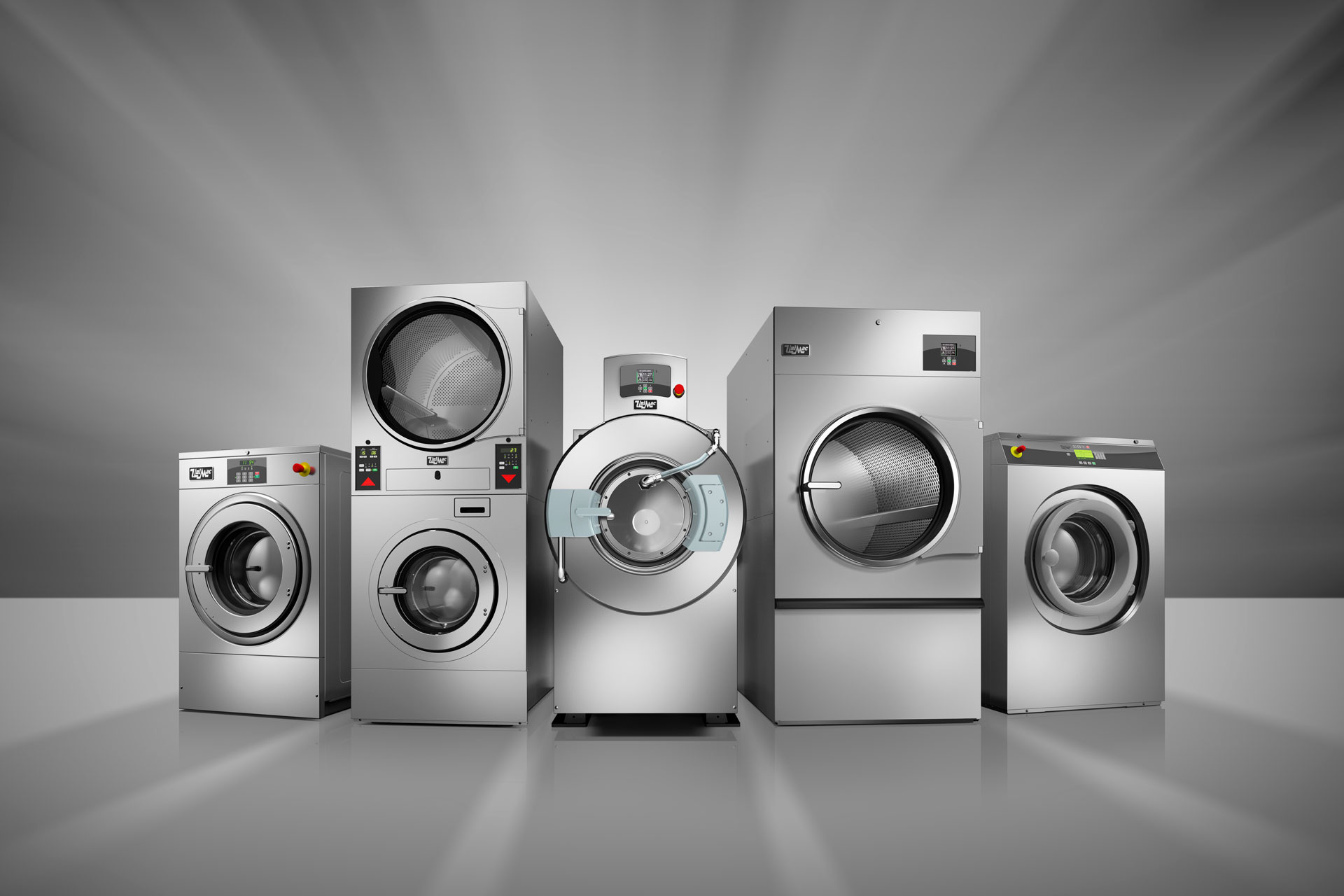Not just how fast…it’s how often, too

While laundry and the equipment helping perform that task in a commercial on-premises laundry seems simple; that’s not always the case. When it comes to true performance, you need the total package – experience, engineering and exceptional testing – to drive results.
Take the seemingly simple concept of G-Force extraction. All washer-extractors are created equal, right? That’s not the case.
First there’s the obvious difference in speeds. A machine with low G-Force of 180 will severely handicap an OPL versus a washer-extractor turning out speeds of 300 G-Force and above. This is because a high G-Force machine will remove up to 30 percent more moisture than the lower speed machine (depending on linen type). It is far more efficient to remove that moisture on the wash side than the drying side.
Thus, leveraging high G-Force will reduce drying times significantly. Simply put, if a laundry is going to experience a bottleneck, it will be on the drying side. So, it is paramount for OPLs processing high volumes to have high G-Force washer-extractors or they should plan on adding additional tumble dryers.
Laundries that are employing ironing equipment can achieve even greater efficiency with 300+ G-Force equipment, as linens emerge from the washer-extractor ready to go directly to the ironer or with minimal conditioning in the tumble dryer before finishing.
So, all 300 G machines are created equal right? You can just choose the one with the lowest price tag? Nope. It’s not that simple. Just because a manufacturer claims a high G-Force number, doesn’t necessarily mean the washer-extractor hits that speed. In shopping for a machine, managers should ask questions, such as what the weight of the machine is, how rugged are the bearings and seals, how long the manufacturer has offered a high-speed model and how well designed and tested the algorithms are.
- Weight. The heavier the frame design and materials, the greater their ability to dissipate forces the high speeds produce as well as manage out-of-balance conditions. Welded plate steel is significantly better suited to do this job than other materials that are bolted.
- Experience. As discussed, there’s nothing simple about high spin speeds. It’s important to select machines with designs that have proven themselves in the field.
- Algorithms. This is the brains behind the brawn and again, experience counts. Managers will want to discuss with their distributor the machine’s out-of-balance tolerance, especially given that underloaded washers are a problem in many on-premises laundries. The frame, rugged bearings and seals and well-designed algorithms combine to ensure a high percentage of loads reach the maximum G-Force. Many machines on the market are built by companies that lack the experience in high speeds and therefore rarely reach the maximum G-Force they claim. It’s important that managers have an understanding of this when comparing models.
G-Force, as in many things, is a get-what-you-pay-for proposition. Lower priced machines from manufacturers lacking the experience in engineering and programming algorithms often never deliver the efficiency, reduced dry times and throughput promised. However, managers who dig beyond the numbers, ask the right questions and have a firm understanding of how all elements combine to achieve performance, can help ensure they select machines with a pedigree of performance.
To learn more about UniMac’s range of washer-extractor options available, click here.
